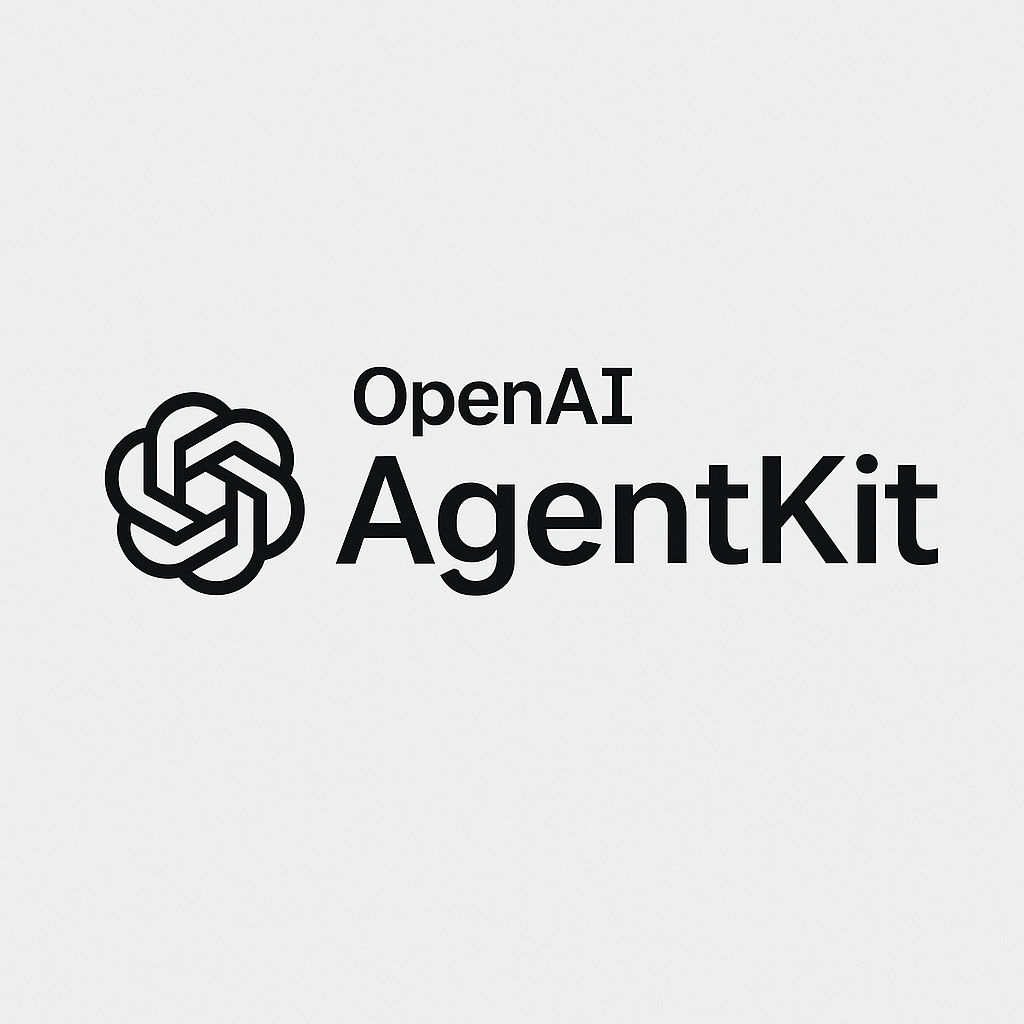OpenAI AgentKit Just Reset AI GTM
OpenAI's AgentKit announcement on October 6, 2025 changed the conversation from "Can AI improve GTM?" to "How fast can you ship production agents?"

OpenAI's AgentKit announcement on October 6, 2025 changed the conversation from "Can AI improve GTM?" to "How fast can you ship production agents?" Most revenue leaders missed what actually happened: the barrier to building AI agents that orchestrate entire workflows just dropped from months of engineering work to days of visual configuration.
The difference between this launch and previous AI tools comes down to integration depth. AgentKit doesn't optimize your existing GTM processes—it replaces them with interconnected agents that span marketing, sales, and customer success in ways that make functional silos obsolete. This article breaks down what AgentKit actually does, which GTM workflows it transforms first, and how to deploy your first production agent in under two weeks.
What AgentKit Is and Why It Matters
OpenAI's AgentKit is a toolkit for building, deploying, and optimizing AI agents that lowers the barrier to creating production-ready automation. It provides a unified platform with visual development tools, built-in quality assurance, and deployment capabilities that work across your existing GTM stack. This isn't another chatbot widget—AgentKit creates agents that automate entire workflows spanning marketing, sales, and customer success.
The difference comes down to integration depth. Previous AI tools bolted onto existing processes: transcription for sales calls, content generation for marketing, ticket routing for support. AgentKit enables agents that orchestrate across functions, connecting data flows that previously lived in silos. A lead scoring agent triggers sales prioritization while simultaneously feeding insights back to marketing messaging and product positioning.
How AgentKit Transforms AI GTM Workflows End to End
Traditional GTM operates in functional silos where marketing owns lead generation, sales owns conversion, and customer success owns retention. Each team optimizes its metrics independently, creating handoff friction and information loss. AgentKit replaces this model with interconnected agents that span the entire customer journey.
Here's how this plays out. Marketing deploys an agent that scores inbound leads based on ICP fit, engagement signals, and intent data from multiple sources. This agent doesn't just assign a number—it automatically routes high-priority prospects to sales with contextualized research, suggested talking points, and real-time competitive intelligence. Sales uses the insights during discovery calls, and the agent captures conversion patterns that flow back to marketing to refine targeting criteria.
Marketing Capture Sales Prioritization CS Expansion Loop
The real power emerges when agents create feedback loops across functions. A lead scoring agent improves as it learns which characteristics predict closed deals. Sales conversation intelligence feeds objection patterns back to marketing messaging. Customer success expansion signals inform which features to emphasize in outbound campaigns. Each interaction makes the entire system smarter, not just individual tools.
This represents a shift from campaign ROI to signal ROI. Instead of measuring whether a specific email sequence converted, you track how quickly the system identifies buying intent and orchestrates the right response. Companies using this approach see 24-hour cycles from signal detection to first meaningful sales action, compared to the traditional 3-5 day lag.
Ownership Shift From Functions to Orchestration
AgentKit changes who owns what in your GTM organization. Marketing no longer owns "leads"—they own signal detection and initial qualification. Sales doesn't own "pipeline"—they own high-value conversations enabled by agent preparation. Customer success moves from reactive support to proactive expansion guided by agent-identified opportunities.
This orchestration model eliminates the attribution wars that plague traditional GTM. When an agent combines product usage data, engagement signals, and intent indicators to surface an expansion opportunity, the question of whether that belongs to marketing, sales, or CS becomes irrelevant. The agent coordinates all three functions simultaneously.
Inside the Agent Builder ChatKit and Evals Stack
AgentKit consists of three core components that work together to move agents from prototype to production. Each addresses a specific barrier that previously kept AI implementations stuck in pilot purgatory.
Agent Builder Workflow Blocks
The Agent Builder provides a visual canvas where you design agent workflows by connecting pre-built blocks. Blocks handle common GTM tasks: enriching prospect data from Clearbit, scoring leads against ICP criteria, triggering Outreach sequences, updating Salesforce records, generating personalized research briefs. You drag blocks onto the canvas, define the connections between them, and configure the logic that determines when each action fires.
This visual approach eliminates the need for custom code in most GTM use cases. A RevOps leader can build an agent that monitors product usage data, cross-references it with contract renewal dates, and alerts the CS team 60 days before at-risk accounts come up for renewal—all without involving engineering.
ChatKit Embedded UIs
ChatKit provides ready-made interface components for customer-facing agent interactions. Instead of building chat windows, form handlers, and response formatters from scratch, you customize pre-built templates that maintain brand consistency while handling the technical complexity of real-time agent communication.
A demand gen team can embed an agent that qualifies inbound demo requests directly on the pricing page. The agent asks contextual questions, assesses fit, routes qualified prospects to sales with full conversation history, and schedules meetings—all within a branded interface that took hours to deploy instead of weeks to build.
Evals for Continuous QA
The Evals framework automates testing before agents reach production. You define success criteria—response accuracy, task completion rates, escalation appropriateness—and Evals runs hundreds of test scenarios to identify failure modes. This catches issues like agents hallucinating company information or misrouting high-value prospects before they impact actual customers.
After deployment, the system continuously samples agent interactions and flags performance degradation. When an agent's lead qualification accuracy drops from 87% to 79%, you get an alert with specific examples of where the logic broke down.
Reinforcement Fine-Tuning Cycle
AgentKit includes mechanisms for agents to learn from real interactions. When a sales rep overrides an agent's priority ranking and closes a deal the system flagged as low-value, that feedback trains the scoring model. When customer success identifies expansion signals the agent missed, the patterns get incorporated into future detection logic.
This creates compounding improvement over time. A lead scoring agent deployed in Q1 might achieve 72% accuracy predicting closed-won deals. By Q4, after learning from thousands of outcomes, that same agent hits 89% accuracy without manual retraining.
5 Immediate GTM Wins You Can Capture This Quarter
The fastest path to AgentKit value starts with high-impact, low-complexity use cases. Five implementations deliver measurable results within 30-60 days while building the foundation for more sophisticated agent networks.
1 24-Hour ICP List Building With Clay and AgentKit
Connect an agent to Clay's data enrichment platform to automate prospect research that currently takes SDRs 2-3 hours per account. The agent pulls firmographic data, identifies decision-makers, maps technology stack, analyzes recent funding or leadership changes, and generates personalized outreach angles. What used to require manual research across LinkedIn, Crunchbase, and company websites now happens automatically overnight.
Drata implemented a similar workflow and reduced list building time from 40 hours per week to 3 hours of review and refinement. Their SDRs shifted from research to actual selling conversations.
2 Auto-Prioritized Call Lists in Salesforce
Deploy an agent that continuously scores your pipeline based on engagement signals, intent data, and historical conversion patterns. Instead of reps working leads in chronological order or gut feel, they start each day with a dynamically ranked call list that puts the highest-probability opportunities at the top.
The agent updates priorities throughout the day as new signals arrive—a prospect visits your pricing page, a competitor mention appears in a G2 review, a champion changes roles. Your reps always work the hottest leads first without manual list management.
3 Real-Time Objection Handling Scripts
Connect an agent to Gong or Chorus to analyze sales calls and generate contextual battlecards during live conversations. When a prospect raises a pricing objection, the agent surfaces relevant case studies, ROI calculators, and competitive positioning specific to that prospect's industry and use case. The rep gets this intelligence in Slack or as a browser notification while still on the call.
This eliminates the scramble to find the right collateral mid-conversation or the need to follow up later with information you could have had immediately available.
4 Renewal Risk Flags in HubSpot
Build an agent that monitors product usage data, support ticket sentiment, executive engagement, and contract terms to identify at-risk renewals 90 days before they come up. The agent doesn't just flag the risk—it suggests specific interventions based on what saved similar accounts in the past and automatically creates tasks for the CS team with recommended actions.
One Series B SaaS company using this approach reduced churn from 8% to 4.5% by catching warning signs their CS team previously missed until it was too late to intervene effectively.
5 Board-Ready Signal ROI Dashboards
Deploy an agent that aggregates GTM performance across your entire stack and translates it into executive-level metrics. Instead of manually pulling data from Salesforce, HubSpot, Gong, and Google Analytics to build board decks, the agent maintains a real-time dashboard showing pipeline velocity, lead-to-customer conversion rates, signal-to-action time, and agent-driven revenue contribution.
This gives CROs the visibility they need to answer board questions about AI ROI without dedicating RevOps resources to manual reporting every month.
Step-By-Step Rollout Plan for a Mid-Market SaaS Team
Most AgentKit implementations fail because teams try to automate everything at once. The successful approach starts narrow, proves value quickly, then expands systematically.
1 Map Current Data Flows
Document how information moves between your GTM systems today. Where does lead data originate? How does it get to sales? What happens after a deal closes? Where do handoffs break down or require manual intervention? This audit reveals the highest-friction points where an agent can deliver immediate value.
You're looking for repetitive tasks that require pulling data from multiple sources, applying consistent logic, and triggering actions across different tools.
2 Select High-Friction Use Case
Choose one workflow that wastes significant time and has clear success criteria. "Qualify inbound leads" works better than "improve marketing effectiveness" because you can measure qualification accuracy and time savings directly. The best first use cases take 30-60 minutes of manual work per instance and happen at least 10 times per week.
Avoid complex multi-system integrations initially. Pick something that touches 2-3 tools maximum and has a straightforward decision tree.
3 Ship a Narrow-Scope Agent in 14 Days
Build the simplest version that delivers value. If you're automating lead qualification, start with basic firmographic scoring before adding intent signals and technographic data. Get the core workflow running in production, even if it only handles 60% of scenarios and requires human review for edge cases.
This two-week sprint forces you to focus on what matters most and prevents the endless refinement trap that keeps pilots stuck in testing forever.
4 Close the Feedback Loop With Evals
Implement performance monitoring from day one. Track how often the agent's decisions match what humans would have done. Measure time savings and accuracy rates. Create a process for capturing when the agent gets it wrong and why.
This feedback becomes training data for the next iteration. After 30 days, you'll have enough real-world examples to refine the agent's logic and expand its scope.
5 Expand to Adjacent Journeys
Once the first agent proves value, identify related workflows where similar patterns apply. If lead qualification works, extend the same logic to opportunity scoring or renewal risk assessment. Build an interconnected network of agents that share learnings rather than deploying isolated point solutions.
The goal is creating a system where each new agent makes existing agents smarter by contributing data to shared models and feedback loops.
New Metrics Measuring Signal ROI and Journey Velocity
AgentKit implementations require different success metrics than traditional GTM tools. Campaign conversion rates and pipeline created still matter, but they don't capture the unique value agents deliver.
Lead-To-First-Action Time
Measure how quickly your GTM system responds after detecting buying intent. Traditional processes take 3-5 days from form fill to first sales touch. Agent-orchestrated workflows compress this to hours. A prospect visits your pricing page, triggers research enrichment, gets qualified, routes to the right rep, and receives personalized outreach—all within 24 hours.
This speed advantage compounds over the sales cycle. Prospects who get immediate, relevant responses convert at 2-3x the rate of those who wait days for generic follow-up.
Agent-Driven Conversion Delta
Track performance differences between agent-assisted and manual processes. If your baseline lead-to-opportunity conversion rate is 18%, what happens to leads the agent qualifies and routes compared to those handled through traditional workflows? This delta quantifies the agent's impact independent of other variables.
Companies typically see 15-40% improvement in conversion rates for agent-assisted workflows, though results vary based on implementation quality and use case selection.
Compounding Learning Rate
Monitor how quickly agent performance improves over time. A lead scoring agent might start at 70% accuracy and improve 2-3 percentage points per month as it learns from outcomes. This improvement velocity indicates whether your feedback loops are working and how much value you'll capture over the next 12-24 months.
The most successful implementations show accelerating improvement curves—agents get better faster as they accumulate more training data and feedback.
Pricing Limits and Security Considerations
AgentKit adoption requires addressing practical concerns around cost management and enterprise security requirements that didn't matter for simple AI tools.
Consumption Costs and Credit Tiers
AgentKit operates on a usage-based pricing model where you pay for API calls, data processing, and model inference. Light implementations might run $500-2000 per month, while enterprise-scale deployments can reach $10,000-50,000 depending on agent complexity and interaction volume.
The key cost variables:
- Number of agent invocations: How often agents run (per lead, per call, per day)
- Data processing volume: Amount of information each agent analyzes
- Model sophistication: GPT-4 costs more than GPT-3.5 per call
- Integration complexity: More system connections increase overhead
Budget planning starts with estimating monthly interaction volumes and working backward to determine which use cases justify the cost based on time savings or revenue impact.
Data Residency and PII Handling
Enterprise GTM systems contain sensitive customer information subject to GDPR, CCPA, and industry-specific regulations. AgentKit implementations require clear policies on what data agents can access, where processing happens, and how long information persists. Most companies establish data classification tiers—public, internal, confidential, restricted—and limit agent access accordingly.
The practical challenge comes when agents need customer data to function effectively but compliance requires strict controls. Solutions include data masking for non-production environments, regional deployment to satisfy residency requirements, and audit logging for every agent action involving PII.
Governance Model for Prompt IP
Your agent configurations represent proprietary business logic that competitors would value highly. The prompts, decision trees, and scoring criteria you develop through iteration become intellectual property worth protecting. Establish version control for agent configurations, limit access to production prompts, and implement approval workflows before deploying changes.
This governance prevents situations where a departing employee takes your carefully refined lead scoring logic to a competitor or an unauthorized prompt change breaks a critical workflow.
Why Tool Sprawl Dies When Agents Orchestrate Your Stack
The average B2B SaaS company uses 15-25 separate tools across their GTM stack. Each tool promised to solve a specific problem, but together they create integration complexity, data silos, and workflow fragmentation. AgentKit offers an alternative to this accumulation pattern.
Instead of buying another point solution when you identify a new need, you deploy an agent that orchestrates existing tools in novel ways. Need better lead qualification? Build an agent that combines Clearbit enrichment, 6sense intent data, and Salesforce history rather than buying a dedicated lead scoring platform. Want improved sales coaching? Create an agent that analyzes Gong calls, cross-references win/loss data, and generates personalized feedback rather than adding another sales enablement tool.
This orchestration approach delivers several advantages over tool accumulation:
- Leverage existing investments: You use tools you've already paid for rather than buying overlapping capabilities
- Span multiple systems: Agents create workflows across platforms without requiring custom integrations
- Adapt as needs evolve: You modify agent logic rather than switching platforms
The result is a leaner, more adaptable stack where agents provide the connective tissue between stable core systems. You might still run Salesforce, HubSpot, and Gong, but agents handle the workflows that previously required 10 additional point solutions.
Take the Readiness Assessment
Understanding where AgentKit fits in your current GTM architecture starts with mapping your existing workflows and identifying high-value automation opportunities. Take our GTM AI Agent Process Assessment to evaluate which use cases deliver the fastest ROI for your specific situation and what foundational work you need to complete before deploying your first production agent.
FAQs About OpenAI AgentKit and AI GTM
Does AgentKit replace my RevOps team?
AgentKit augments rather than replaces RevOps professionals by automating routine tasks while requiring human oversight for strategy and optimization. RevOps teams shift from manual data pulls and process execution to designing agent workflows, monitoring performance, and refining logic based on business outcomes. The role evolves from operator to orchestrator—less time in spreadsheets, more time on strategic decisions that agents can't make.
What technical skills are required to build the first agent?
Basic workflow mapping and API understanding help, but AgentKit's visual builder eliminates coding requirements for most GTM use cases. If you can document a process in a flowchart and understand how your systems connect—what data lives where, what actions each tool can perform—you can build functional agents. The learning curve resembles Zapier or HubSpot workflows rather than software development. Most RevOps or marketing ops professionals become productive within 2-3 weeks.
How can I sandbox production data safely?
AgentKit includes testing environments with data masking capabilities that let you experiment without exposing sensitive customer information. You can copy your production workflows to a sandbox, replace real customer data with synthetic examples that maintain statistical properties, and run unlimited tests before deploying to production. This approach catches logic errors and edge cases without risk to actual prospects or customers.
Related Blogs Post


Quick-Deploy AI Agents That Transform B2B Sales GTM

From AI Tool Sprawl to Strategic Networks: A Schön-Inspired GTM Framework
Despite 70% AI adoption in GTM workflows, companies struggle with conversions. This framework shows how to move from isolated AI tools to interconnected systems that deliver measurable results.

Power Your AI GTM Strategy by Recording Customer Phone Calls
To build an effective AI-driven Go-To-Market (GTM) strategy, start by recording customer calls.

AI Agent Strategy: Your Guide to GTM Excellence
The go-to-market landscape has fundamentally shifted. Today's top-performing organizations are leveraging AI agents to create competitive advantages, achieving outcomes to impact time savings per rep, increasing account coverage, and pipeline.

Signal-Based GTM: Key Insights from Clay's Sculpt 2025 in San Francisco
The AI hype in sales is settling into practical results. Companies are saving reps 10+ hours per week, hitting 72% account coverage instead of 19%, and building entirely new roles to make it happen.



